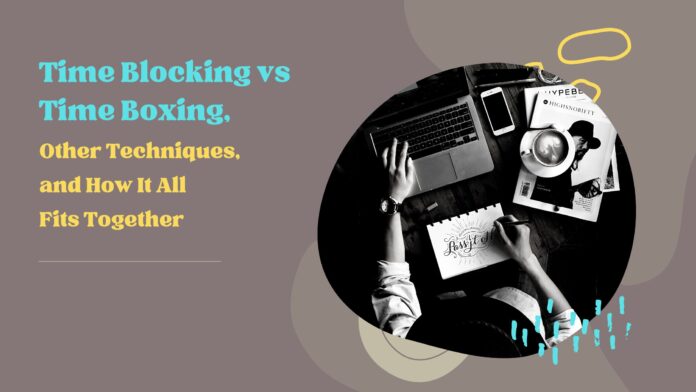In a world with endless distractions, it’s no wonder that we find it difficult to complete tasks. Focus is hard to come by these days.
This is especially true when you’re working from home. Household tasks that would otherwise be out of sight and out of mind are suddenly in your workspace.
With that said, there are some proven methods to help you get things done. Time blocking and Time boxing are the two main techniques, though there are some others as well. Read on to find out what might work best for you.
Time Blocking
You’re probably most familiar with time blocking. Schools and factories are designed with this technique in mind. We work on a specific task for a set amount of time, and then we move on to the next thing when that time is up. Perhaps that time is punctuated by a bell or an alert, just like in school.
Enter Parkinson’s Law – the idea that work expands to take up the amount of time allowed. Have you ever noticed that if given three weeks for a project, it takes three weeks to do?
It’s no coincidence. You’ve likely subconsciously worked at a pace that caused it to take that long. And succumbed to all sorts of procrastination, perfectionism, and other useless pursuits in the process.
But it’s not all bad. Time blocking is an excellent way to get something started. Once you dedicate a bit of time to a project you’re stuck on, you’re going to identify sub-tasks that need completing. And those are useful for getting the most out of your time.
Time Boxing
Time Boxing flips time blocking on its head. It’s the preferred method of productivity for Bill Gates and Elon Musk. Instead of allocating an amount of time to work on a task, you allocate the amount of time it will take you to get it done.
It’s a mind shift where you decide when you will get something done. You then plan your day into boxes that are as small as 15-minute increments. And then you do what’s required in that amount of time.
If you find that you didn’t complete your task, you add more time to complete it the next time you’re time boxing.
Another key element of time boxing is the concept of working without distraction. Because you’re working against the clock to complete your task, you’re less likely to respond to a distraction. Once your time is up, it’s up. You can check your distractions later during the time box allocated to them.
Pomodoro
You’ve likely heard of the Pomodoro technique – the one with the cute little tomato-shaped kitchen timer.
It’s a type of time boxing where you allow 25 minutes for a task, and then take a 5 minute break. Repeat as necessary.
Task Batching
Here you allocate time to complete many low-value tasks at once, such as reading emails. It’s meant to keep your mind focused on activities that require similar thought patterns as opposed to jumping between tasks. Many people find it difficult to focus this way, because there’s not a ton of concentration required.
Day Theming
Some swear by keeping a theme to each day, such as “marketing” or “lead generation.” It’s another form of task batching, but with heavier tasks in mind. The idea is to keep everyone focused on the job at hand and to avoid having to switch gears.
The 80/20 Rule
This is the Pareto Principle – the idea that 80% of output comes about from only 20% of input. In other words, we should place a priority on the 20% of factors that will produce the greatest results.
But beware – this doesn’t mean that we ignore the other 80% of tasks. It means that you should give the most attention to the things that will create the best return.
Deep Work
This is the practice of eliminating distractions and creating an almost cave-like environment to work in. This way, you can really tune everything out and get to it. Research suggests 90-minute increments are best for deep work.
Final thoughts
There’s no right way to be productive. It’s a personal subject that’s different for everyone. However, eliminating distractions to get things done is universal. Try any combination of the techniques mentioned above to find what works best for you and your workplace.










